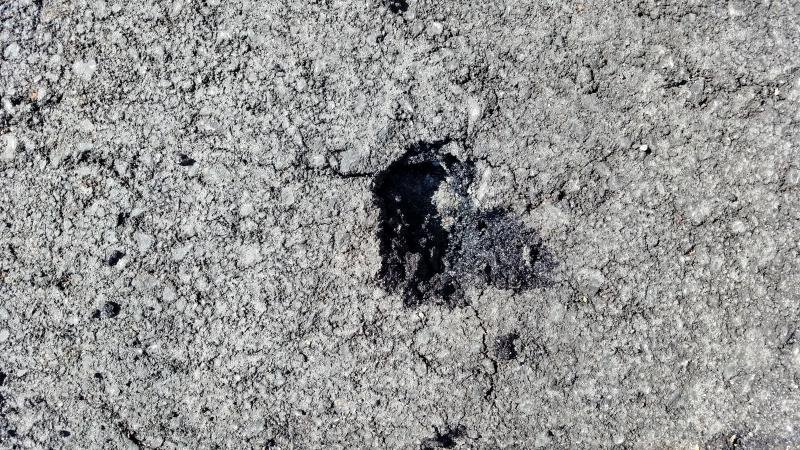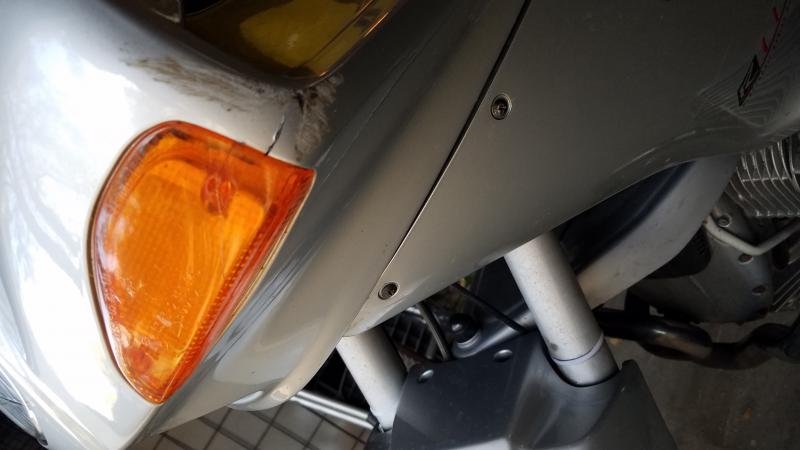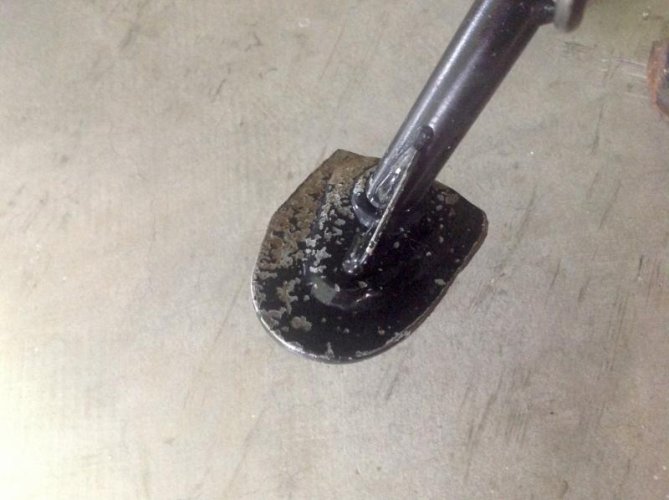So I was at the local YMCA and a worker makes an announcement for the owner of a BMW motorcycle. It seems my bike had tipped over and was laying on its' side. Thinking that someone must have bumped it, I went outside to discover that the pavement that had been put down three weeks before had failed to cure. My kickstand sunk in a little over an inch causing the bike to fall over. The fairing with the headlamp sustained a crack and the engine cover got scuffed. Oil had leaked out of the bike around where the driver side throttle body is located. The bike fired right up, no smoke from the exhaust, and seems none the worse for wear... Will definitely use the center stand from now on if the pavement looks new.
Two questions: 1) Where did the oil come from? 2) Does anyone have ideas on where to get a new front fairing? I looked for a while online but couldn't find anything.
 \
\

Two questions: 1) Where did the oil come from? 2) Does anyone have ideas on where to get a new front fairing? I looked for a while online but couldn't find anything.
 \
\



